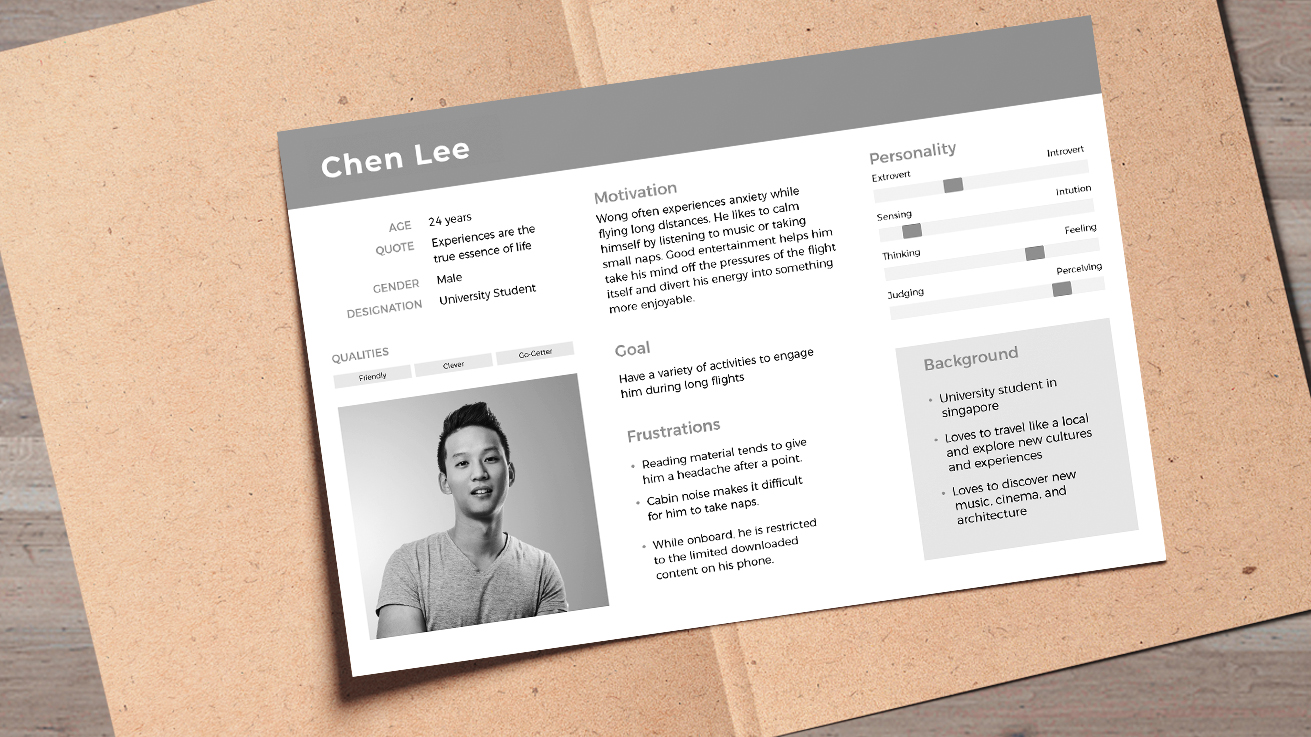User Persona are fictional characters used by designers to gain insights into the different types of users.
Personas are created by designers on the basis of user data to help reveal more about user characteristics, needs, goals, what delights them, or even what puts them off. Designers create these fictional characters as user personas – each of these personas represent different user types, their perspectives, behavior, and what they do with products in relevant contexts. These personas are useful while defining user journeys, and further in the design process, even test prototypes. But before the personas are drafted, the real challenge lies in identifying the right user groups which will help in arriving at the right results.
Personas are crucial in the process of building empathy with target users. They help in shedding light on the users’ world and their interactions with other stakeholders in the system. They help designers to make design decisions based on the persona’s/user group’s exact needs and gauge the efficacy of the designs through their eyes. Using personas also lets the stakeholders avoid designing for themselves or stretching generic users to fit designs.
It is important to note that though personas are fictional, they are always derived from observing actual users, and not imaginary entities.

Developing personas is an iterative process – it undergoes several updates before it takes shape.
Aspects to be Covered While Drafting User Persona
1) Think of the target user’s actual behavior, attitudes, skillset, motivations, and goals from the perspective of the product/ system.
Julia is a junior ground staff with an airline. She works at the airline’s boarding desk at the airport. She is attentive and sharp while on the job. She is comfortable using the airline’s booking interface. She is meticulous about providing a hassle-free boarding experience to all passengers at her counter.
2) Stay close to the context – Think of specific points about the user’s habits and map their behavior with regard to how they’re currently using the product/ system.
Julia is comfortable enough while using the system. She faces frustration when the system hangs, and she has to ask the passenger to wait while the system reboots/refreshes.
3) Identify the ultimate goal of the user. Then list the features which would help him/her achieve that goal in the best possible way.
Julia hates it when her line of passengers grows owing to the slow speed of the system. (Here it might help if the factors slowing down the system are dealt with.)
4) Get into the shoes of the user and imagine how he/she would go about using the product to attain a particular goal with ease and pleasure.
Occasionally, the system does not reflect the seats booked by passengers via online check-in. This would sometimes lead to friction – some pre-booked seats would be given to others. In an ideal world, Julia’s system would update the seats that have been checked-in by passengers online in real-time. Her system would never slow down, and all her passengers will get their boarding passes, perhaps with the seats of their choice, smoothly.
5) Envision how the user would go about spending a regular day handling the product/system. Think of challenges that might crop up during the course of a regular or maybe an unusually busy day.
Some passengers traveling on their birthday or anniversary expect or request a free upgrade – Julia’s system could be better-equipped to reflect whether those seats can be given, and help her make that correct decision in the spur of the moment.
6) Make note of the user’s pain points. Try to picture the toughest, most frustrating aspect of the product’s functionality from their perspective.
During peak seasons when the flights are packed and the queues are long, a system slowdown is extremely frustrating. This is the time when passengers expect the best service, but the system slowdown prevents it.
Why is Persona Necessary?
By far the most important reason to create user personas is to ensure that your design fits the needs of actual users, solves their problems, and becomes a delight for them to use. By ensuring that your personas are close to the actual user, your design is sure to hit the bullseye in terms of user satisfaction. The resulting product, in this case, functions seamlessly to the best advantage of the users, and ultimately meets business goals.
Stakeholders gain the chance to debate the features and aspects of the redesign.
Personas come in handy especially in projects with multiple stakeholders from different departments expressing varied ideas about what needs to be prioritized. User personas help to reveal common frustrations and pain points to realistically list priorities, as against being driven by stakeholders.
Creating a Persona is a vital exercise for the design team.
Creating personas involves a lot of interesting discussions for the design team. They get involved in using their observation skills and supplement it with their analysis – a fun exercise. These discussions help the team members to gain a better and in-depth understanding of the users.
Additionally, Persona help drive realistic wireframes and site architecture.
As personas are based on real users, the team can make optimal use of them in decision making. They can be used in scenarios and determining the perfect placement of content which enhances the usability in the true sense. Using personas while pre-launch testing can help in saving time and resources, as against testing it with real users after the project launch.
Personas are a vital factor in creating a sense of empathy.
Personas help designers and developers to avoid using their own mental models in the creation process. By using personas, they are saved from designing products that are a mismatch with user needs.
The key to designing a good product lies in developing empathy for the actual user. Designing a user-friendly product begins with understanding the user. In developing personas, designers actually get inside the head of the real user and try to create an output that will not just satisfy, but even surpasses their expectations.
“Personas consolidate archetypical descriptions of user behavior patterns into representative profiles, to humanize design focus, test scenarios, and aid design communication.”
– Alan Cooper
With people becoming actively involved in quality technology on a day-to-day basis, it is important to ensure they experience the same ease in all aspects of their lives. Persona is a vital element of the user-centric design process. They help in defining user attitudes and motivations and their pain points – all of which are essential in creating a wholesome, user-friendly, and thereby a successful product.










